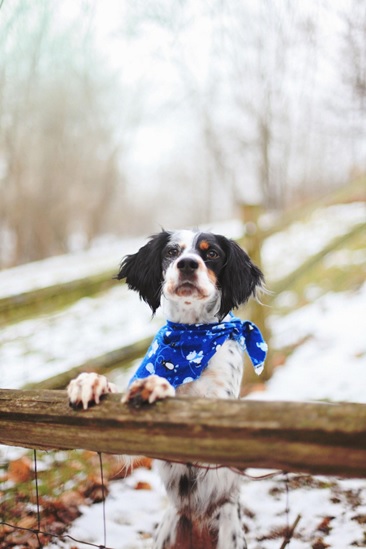You love living with your canine friend, but sometimes you just can’t figure out why he does the things he does. And unfortunately, you can’t exactly ask your dog why he’s so drawn to the cat’s litter box. But often the behaviors we view as unusual or off-putting aren’t that uncommon after all. TulsaPets Magazine explains the reasons behind a few behaviors that leave dog owners scratching their heads.

Why Does My Dog …
Pant?
Dogs don’t sweat like humans do. Instead, they pant to cool down. However, sometimes dogs pant when it’s not hot and they haven’t been exercising. If your dog is panting for seemingly no reason, he may be stressed, fearful, or in pain. If the panting doesn’t subside once stressors are eliminated, it could indicate a health problem.
Chase His Tail?
If none of his humans are up for a game of tug-of-war and your dog has energy to burn, he might chase his own tail as a fun game. However, if your dog appears distressed while chasing his tail, there could be a more concerning reason. If he has fleas or irritated anal glands, it might appear he’s chasing his tail when really he’s trying to access an area that’s bothering him. Fleas can be treated with a topical flea preventative, but if it’s an anal gland issue, you’ll need to express them or have your vet or groomer do it.
Bark at Nothing?
Every time you leave your dog in the backyard unattended, he barks up a storm. But when you look, there’s nothing to bark at! What gives? If your dog is barking for no reason, he’s probably bored. This is a big sign that your dog isn’t getting enough exercise! While exercise needs vary based on age and breed, PetMD says most dogs need 30 minutes to two hours of activity every day. If you’re having trouble getting your dog adequate exercise, it’s time to start thinking seriously about hiring a dog walker. And in the meantime, don’t leave your dog unattended outside, or you might sour your relationship with the neighbors.
Eat Poop?
There’s nothing grosser than a dog that eats poop. But according to Scientific American, eating excrement is a fairly common dog behavior. While in some dogs eating poop could signal a veterinary concern, it doesn’t necessarily indicate a problem. If you want to curb your dog’s unique dietary preferences, get in the habit of scooping poop from the yard daily and keep litter boxes out of his reach.
Sniff Crotches?
It’s great to have a friendly dog, but sometimes dogs can get a little too friendly. If your dog has ever run up to a stranger only to immediately stick his face in their groin, you know just how embarrassing this behavior is. While it may be normal, it’s not exactly good manners. If you let it go unchecked, people might start crossing the street when your dog approaches. Train your dog out of this behavior by teaching him that sitting and waiting for humans to greet him is the best way to get the attention he craves. As with most manners training, it’s best to work on this at home with dog-friendly guests rather than submitting unwitting strangers to your dog’s antics.
Pull on the Leash?
Walks aren’t as enjoyable when your dog pulls on the leash, but he does it because it works. When he pulls, he gets a little bit closer to where he wants to go. To break this behavior and enjoy leisurely strolls with your dog, you need to teach him that pulling won’t work. There are a few training strategies to break your dog of this habit, but be prepared for walks that are more tedious than fun during the training period. Ask your dog walker to help by using the same strategies during one-on-one walks with your dog. Lastly, it may be best to purchase a new leash that works best for you and your dog once you’ve dialed in training strategies. Read product reviews from vets to ensure the one you purchase is high quality and will help reinforce training strategies rather than discourage them.
The best way to train your dog out of unwanted behaviors is to understand the reason behind them. When you know your dog’s motivation for pulling, barking, or other nuisance behavior, you can harness that motivation to redirect him to behaviors you do want. If your dog has a curious habit that isn’t answered here, talk to your vet to learn what’s behind it.
Image via Pexels

